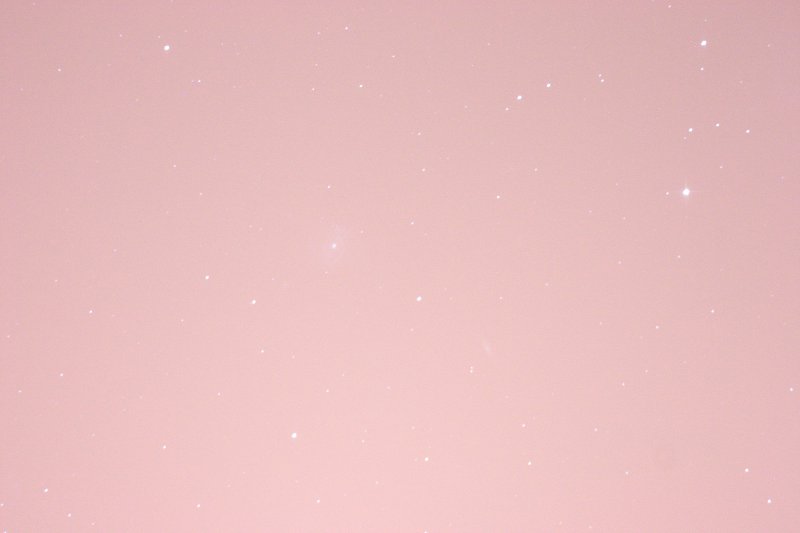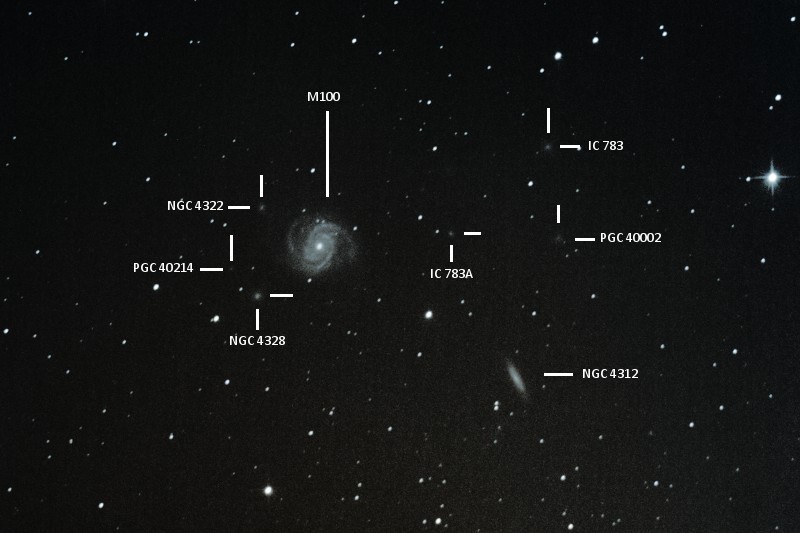I’ve been wanting for some time now to take a look around the Virgo cluster of galaxies, but Virgo has not really been high enough in my sky until now. So with Spring on the horizon and Virgo swinging higher into the sky I gave it a go back in mid Feb. The Virgo Cluster comprises some 1300 to 2000 galaxies, compared to our own ‘Local Group’ of galaxies which comprises around 54. The Local Group and Virgo Cluster are part of the Virgo SuperCluster, which comprises some 100 such galaxy clusters. Try not to think about the fact that there are apparently millions of superclusters in the universe or your head might hurt!
My target was M100, a Spiral Galaxy, actually in the Coma Berenices constellation which is a neighbour of Virgo. I ‘star-hopped’ to the charted location – nothing. I went backwards and forwards at different magnifications – nothing. After much peering I finally, with a bit of imagination, saw some very faint ghostly wisps against the background sky with its persistent orange tinge. The problem with galaxies that are face on (as opposed to edge-on) is that the light is very thinly spread and I have found they can be quite disappointing for visual observation and quite often I just can’t find them. This is where photographic observation is useful. Multiple long (say 2 min) exposures from a camera can bring out detail that the eye can have no hope of seeing. In particular, where skies conditions are less than ideal, image processing can be used to isolate the light of the target from background light such as the glow from street lighting.
This last point on image processing is the most crucial. To demonstrate, here is a raw two minute exposure with a digital SLR. Can you spot the galaxy? Can you actually spot two? Would you be surprised to know there are actually 9 identifiable galaxies in this image?

When I first did this 2 minute exposure and reviewed the image on the camera display, I assumed I was in the wrong location. But on closer review a faint spiral can be seen centre left, and a smaller line looking a bit like a smudged star can be seen lower and to the right.
Having confirmed I was in the right part of the sky I continued with a number of 2 min exposures – and tried some 3 minute ones as well.
At a later date these were processed through some free software; I use Deep Sky Stacker. The end result after stripping away all the stray light is as follows (which I have subsequently annotated):

When I first took this I was only looking for M100. The cigar shaped galaxy NGC 4312 was a pleasant surprise. I never imagined I would pick up another 7 galaxies at the same time, however a brilliant piece of sky mapping software that I found confirms these and provides the catlogue identifiers. On the photo above can you find the one I haven’t annotated?
